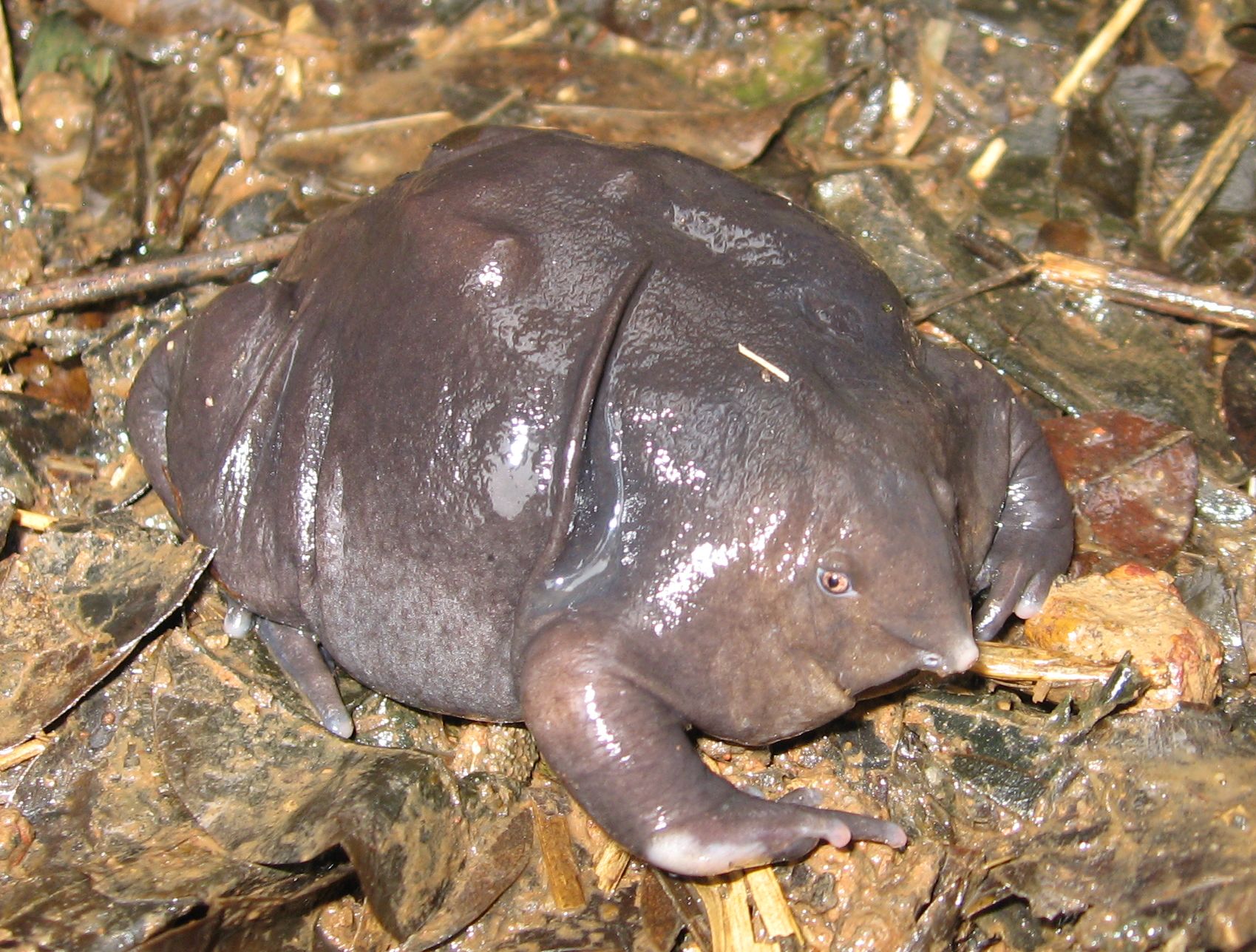Purple frog
(Nasikabatrachus sahyadrensis)

Description
The purple frog (Nasikabatrachus sahyadrensis), Indian purple frog, or pignose frog is a frog species of the genus Nasikabatrachus. It is endemic to the Western Ghats in India. Although the adult frog was formally described in October 2003, the juvenile form of the species was described earlier in 1917. The species was described from specimens collected in the Idukki district of Kerala by S.D. Biju from the Tropical Botanic Garden and Research Institute in Palode, India, and Franky Bossuyt from the Vrije Universiteit Brussel (Free University of Brussels), in 2003. However, it was already well known to the local people and several earlier documented specimens and publications had been ignored by the authors in the 2003 paper that describes the genus and species. The body of Nasikabatrachus sahyadrensis appears robust and bloated and is relatively rounded compared to other more dorsoventrally flattened frogs. Their flattened body assists them to cling to submerged rocks and boulders which essentially helps them fight strong currents, allowing them to remain near stream banks where they typically reside. Its arms and legs splay out in the standard anuran body form. Compared to other frogs, N. sahyadrensis has a small head and an unusual pointed snout. Adults are typically dark purplish-grey in color. Males are about a third of the length of females. The specimen with which the species was originally described was 7.0 cm (2.8 inches) long from the tip of the snout to the vent. Tadpoles of the species had been described in 1917 by Nelson Annandale and C. R. Narayan Rao as having oral suckers that allowed them to live in torrential streams. Suckers are also present in rheophilic fishes of genera such as Glyptothorax, Travancoria, Homaloptera, and Bhavania, adaptations that are the result of convergent evolution. Some of these fishes co-occur with Nasikabatrachus tadpoles in the hill streams. Its vocalization is a drawn-out harsh call that sounds similar to a chicken clucking. Males of this species exhibit the unique behavior of calling from under a thin layer of soil. Some other burrowing frogs (Myobatrachus gouldii and Arenophyrne rotunda) are known to do this, but these frogs have also been observed to call from the surface, while N. sahyadrensis has not. The frogs may switch to headfirst burrowing due to their wedge-shaped skull and other shaped limbs
Taxonomic tree:







